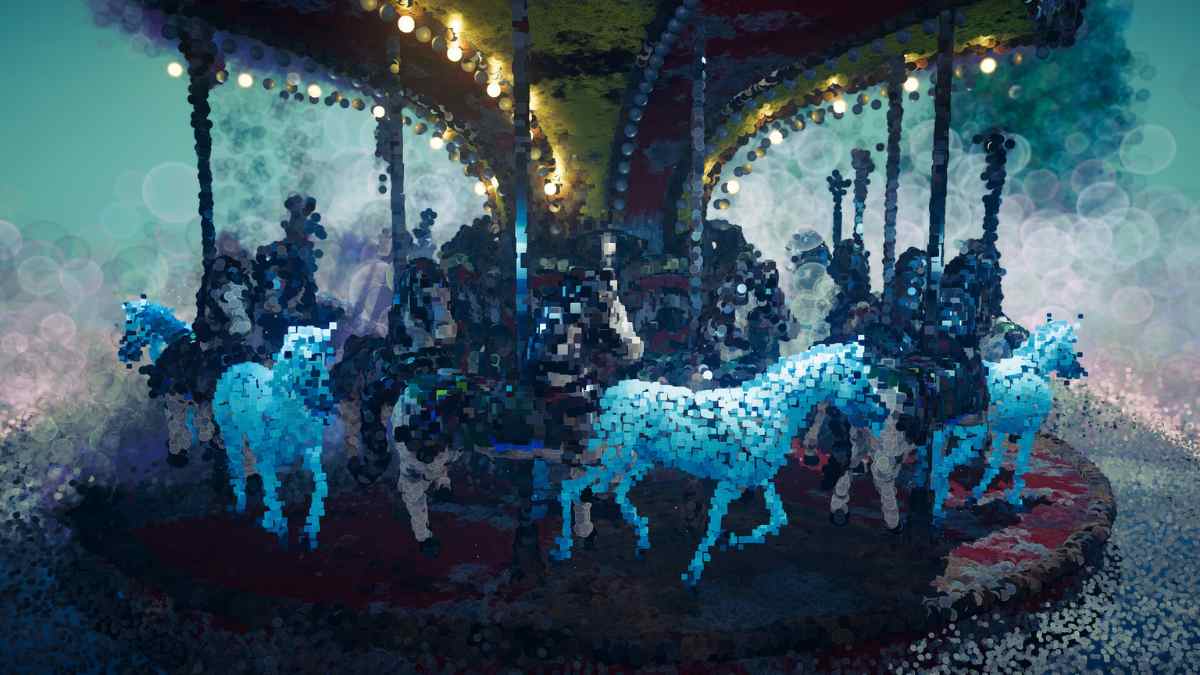Dreams of Another doesn’t follow the usual VR blueprint. There are no wave shooters, no escape rooms, and no puzzle mechanics leading to a clean resolution. Instead, it moves more like a stream of consciousness—abstract, layered, and open-ended.
Created by the team at Wolf & Wood, the project is shaping up to be a psychological dive into shifting identity. It doesn’t pretend to guide the player through a traditional story. It’s about being lost and learning how to sit with that discomfort.
Built Around Themes of Transformation
At its core, the game focuses on what it means to lose yourself—literally and metaphorically. Players take on the role of a shapeshifter, shifting not just form but identity. The experience is less about action and more about inhabiting different states of being across unfamiliar environments.
The structure avoids traditional linear progression. Instead, the player drifts through memories, dreams, and symbolic spaces. The narrative unfolds indirectly, through imagery and feeling rather than exposition.
There’s a persistent sense of duality in every scene. What you see might not be what you are. And what you become next is often unclear until it happens.
VR as a Medium, Not a Gimmick
Dreams of Another leans heavily into what VR can do that flatscreen games can’t. The design doesn’t just use VR for presence, but for disorientation. Shifts in scale, body perspective, and sensory feedback are all part of how the game tells its story.
You’re not watching transformation happen. You’re inside it. One moment you might be navigating a small room as yourself. The next, you’re occupying a space as a completely different creature or entity. The intent isn’t to shock or confuse for the sake of it, but to push the boundaries of perspective—how the self feels when stripped of labels and roles. It uses embodiment as narrative texture.
Visuals Blend the Familiar and the Distorted
The art direction mixes grounded, tactile spaces with warped geometry and surreal lighting. Environments shift between sterile, almost clinical interiors and dreamlike organic worlds.
Nothing stays static for long. Walls bend, proportions shift, and the visual language of each level reflects the psychological state being explored. The result isn’t horror, but a kind of soft unease—a feeling that things aren’t quite settled, and neither are you. It recalls the emotional pacing of games like The Under Presents or Red Matter, but stripped of traditional narrative scaffolding.
Platform and Release Scope
Dreams of Another is confirmed for Quest and PC VR. It’s being designed from the ground up for roomscale interaction, so seated or non-VR versions aren’t in the cards. No hard release date yet, but the project is aiming to ship with full story completion and polished mechanics, not as early access. There’s no mention of episodic content or multiplayer layers. Everything points to a single-player, tightly scoped narrative experience.
Experimental, But Focused
It’s clear the team isn’t chasing trends. Dreams of Another isn’t trying to appeal to everyone. It’s using VR to create a space where identity, perception, and movement blend together in unfamiliar ways. It’s not the kind of title that will dominate storefront charts. But for players who are drawn to slower, more experimental narratives—especially those that use the body as a storytelling tool—it’s one worth watching.
Beta Hunter & Brutally Honest Reviewer
He plays what others fear. BETATESTER-X dives into broken builds, awkward alphas, and early-access chaos so you don’t have to. No hype. No mercy. Just raw, first-hand feedback from the trenches of unfinished games.




